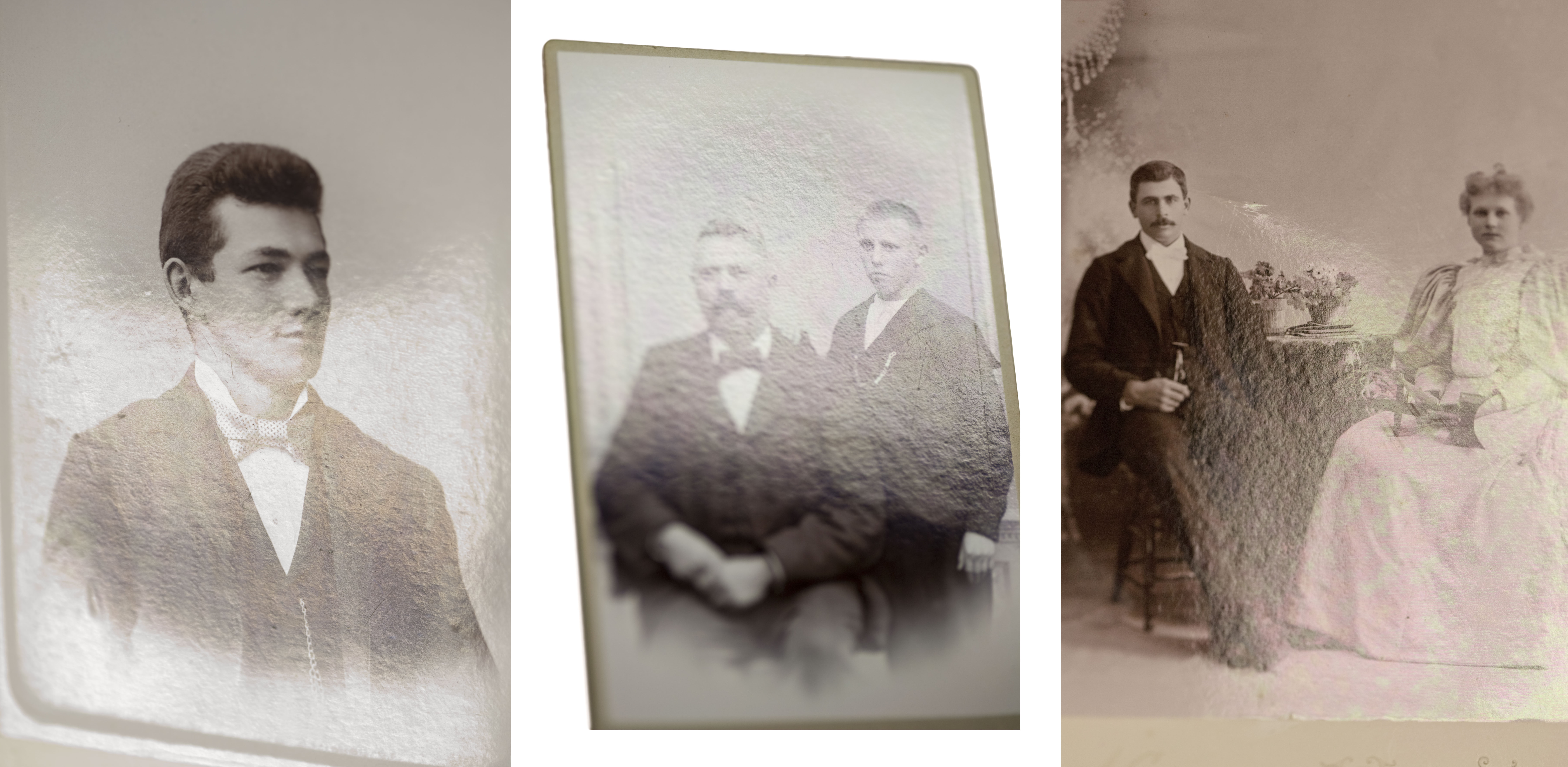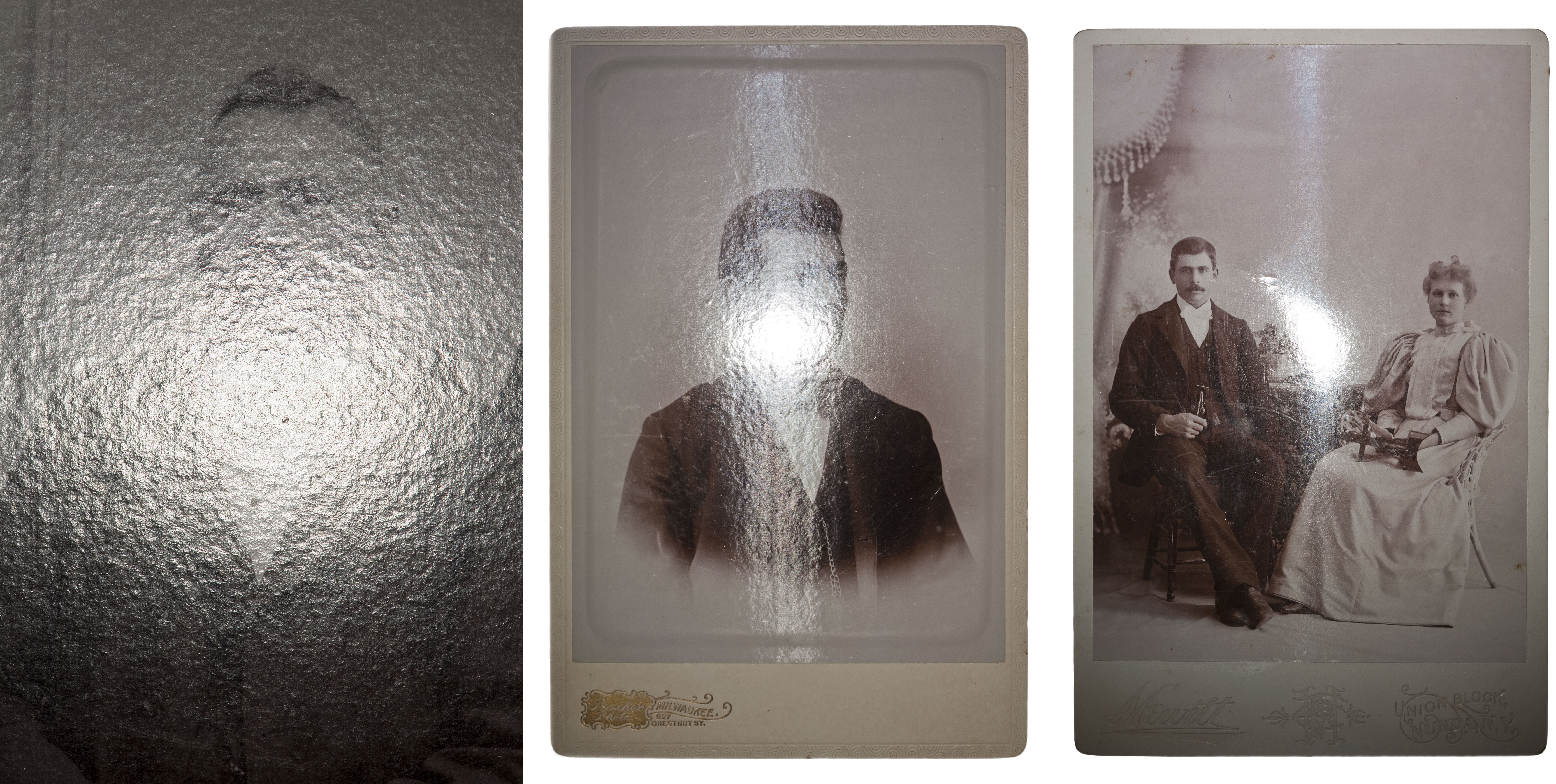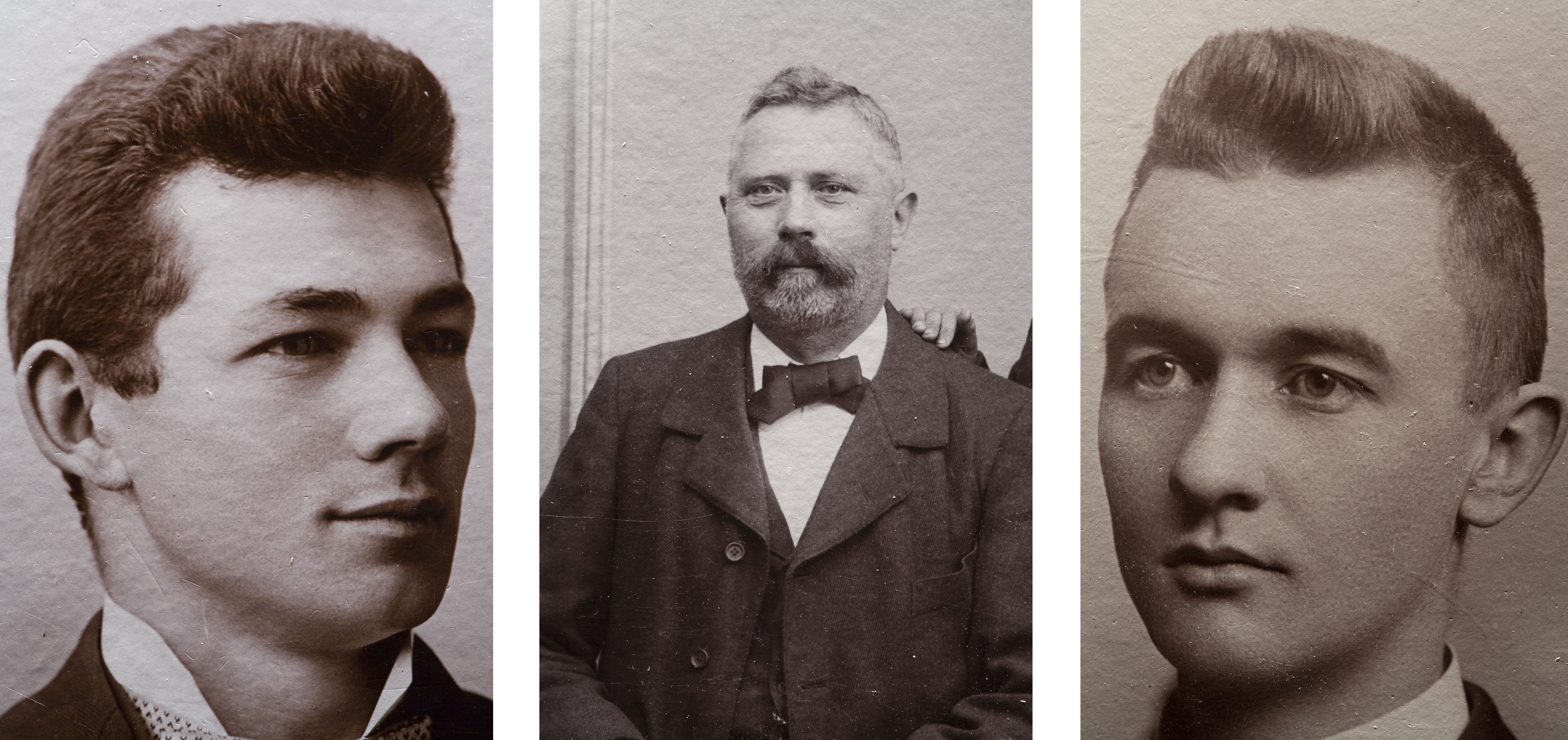Collodion POP Surface View
Surface Sheen
Collodion POPs have a thick, smooth baryta layer giving the surface a smooth glossy sheen. Prints were often burnished as well during the mounting process, or ferrotyped to add gloss. Some collodion POPs have an iridescent surface. While there is no conclusive explanation for this phenomenon on some, but not all, collodion POPs, but not all, the current theory is that it is caused by thin film interference.
Collodion POPs have a thick, smooth baryta layer giving the surface a smooth glossy sheen. Prints were often burnished as well during the mounting process, or ferrotyped to add gloss. Some collodion POPs have an iridescent surface. While there is no conclusive explanation for this phenomenon on some, but not all, collodion POPs, but not all, the current theory is that it is caused by thin film interference.
What to look for: Glossy, smooth surface; possible iridescence, best seen under fluorescent lighting.

Some, though not all, Collodion POPs have an iridescent surface, which is best seen under fluorescent lights.

Collodion POPs are often called glossy collodion due to their glossy surface and to differentiate them from matte collodion prints.
Surface Texture
Collodion POPs have a smooth, thick baryta layer and no matting agents, giving the surface a smooth texture.
Collodion POPs have a smooth, thick baryta layer and no matting agents, giving the surface a smooth texture.
What to look for: Smooth surface.

Raking light reveals the smooth surface of Collodion POP.